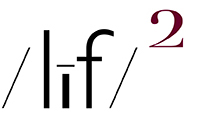trifecta ~ (embiggenable) • iPhone
Sometimes it's about color. Other times it's about shapes, lines, form. Then there are times when it's about light. In the case of today's picture, it's about all 3. Occasionally, it's actually about the referent. However, in this case, it's most definitely not about the toilet, door or floor.
In fact, it would not be much of a stretch to write that most of my pictures are only tangentially about the depicted referent .... as I have previously written, I have a seemingly preternatural sensitivity to the relationships/ arrangements of color, shapes, and light to themselves or each other. It's how I see.
That written, that sensitivity operates on a subconscious / intuitive level. However, I have come to understand that that sensitivity is what causes me to make the pictures I make inasmuch as I make my pictures driven by "feel".
That is, there is virtually no thought process-other than getting the exposure right-involved in the making of my pictures .... when my eye and sensibilities are pricked by a something (could be any thing), I bring the LCD screen to my eye and isolate / arrange the visual elements by how they feel, organized-wise, within my chosen frame. When everything feels "right", I make the picture.
Re: "feels right" - when the image on my LCD screen feels right, I make the picture. Because it feels right, I almost never "work" a subject - i.e., change my POV, variations on my framing, etc. In addition, because I picture what feels right, I never crop my picture files. What a viewer of my pictures sees is exactly what I saw on my LCD screen at the instant I made the picture.
In my next entry, I'll address the best comment I ever received, re: my pictures, and how it explains how, in addition to my career as a commercial photographer, I also had a side-career in graphic design and a stint as an ad agency Creative Director.
